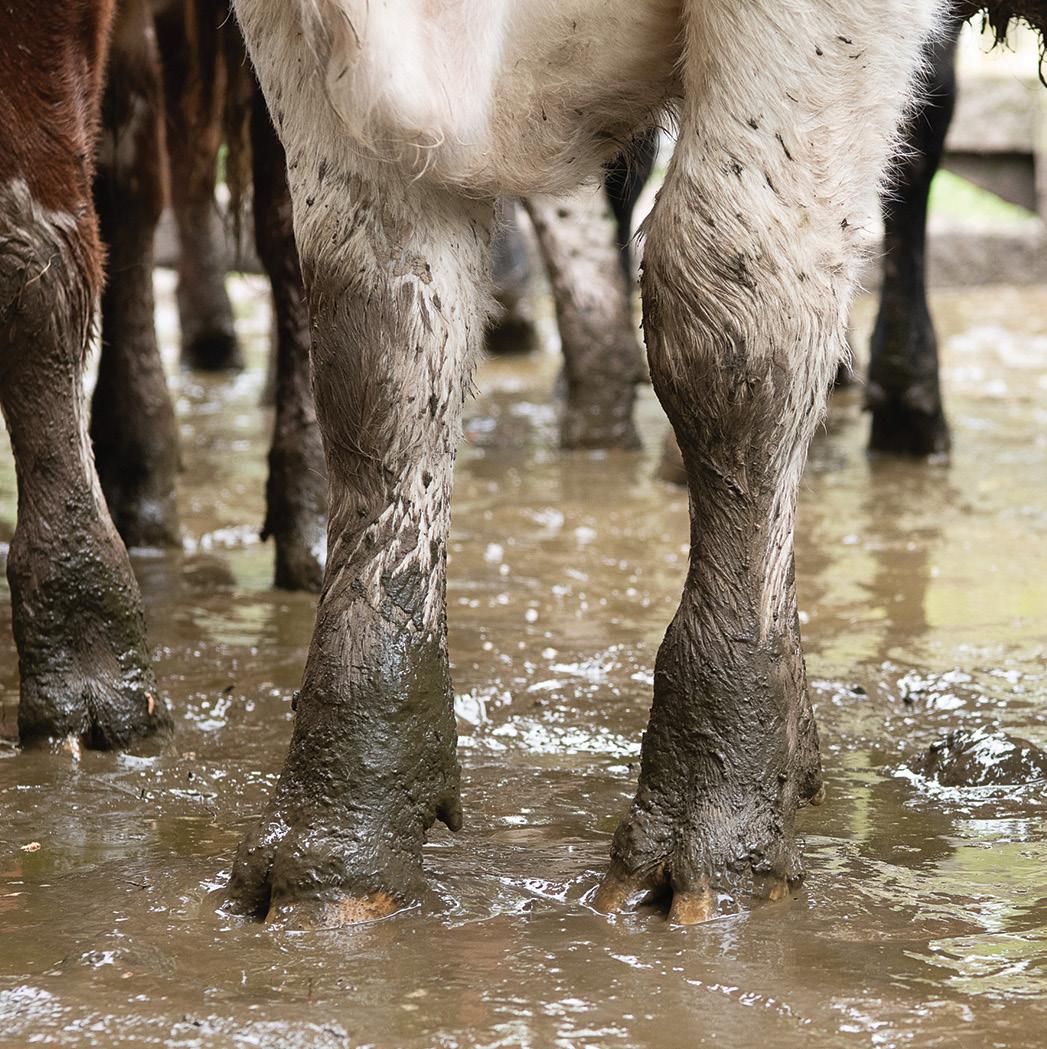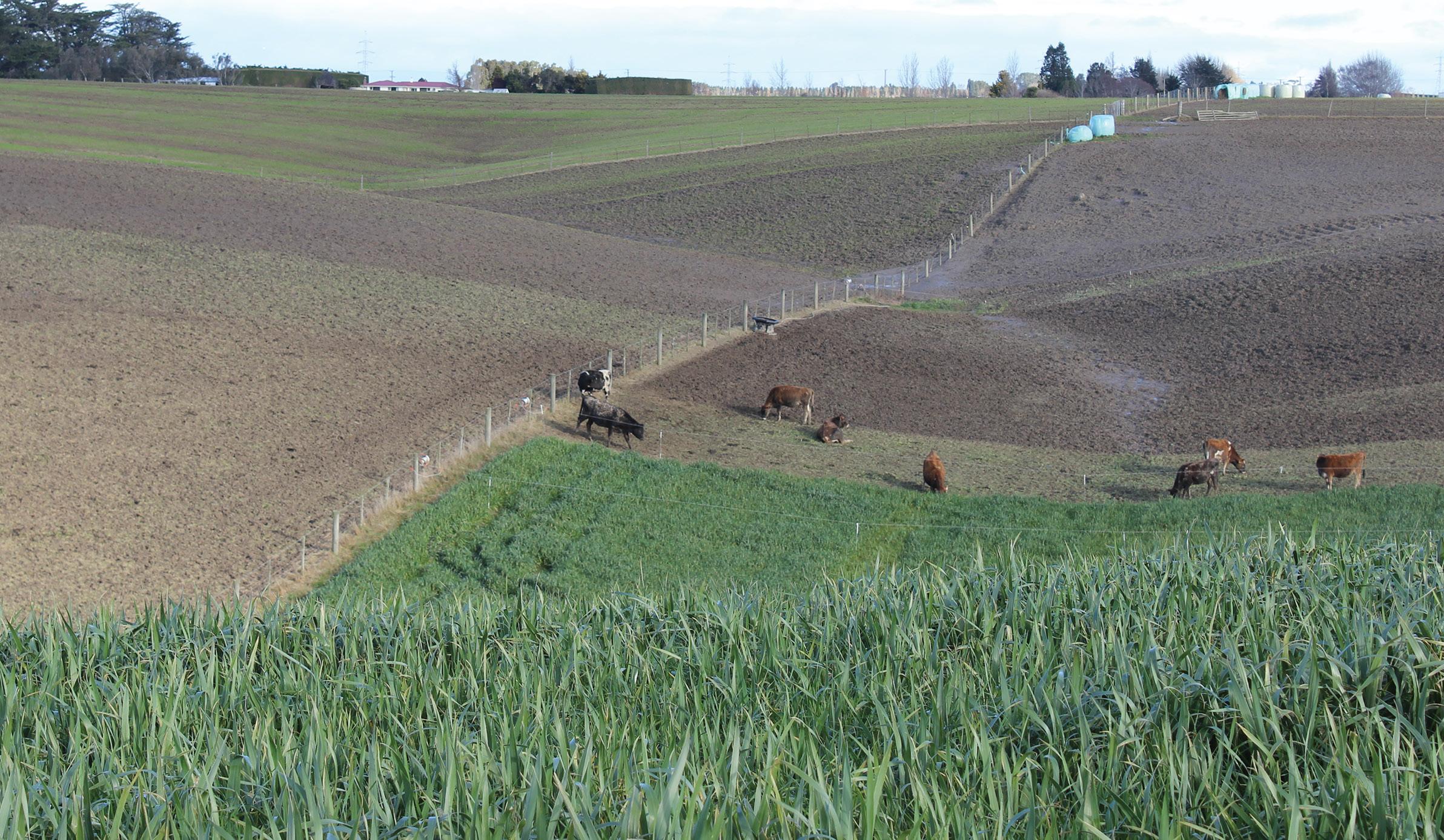
5 minute read
Wintering: No more making mud
DAIRY 101 WINTERING ALTERNATIVES
No more making mud
Story and photos by: Karen Trebilcock
About now you will be thinking about wintering for next year. Yes, it’s about 10 months away but that’s how long it takes to grow a crop of fodder beet.
With proposed government regulations not kicking in now until May, which means it will be another winter before they take effect, it’s business as usual but that doesn’t mean that making mud should be what you want for your farm and your cows once again.
Besides the fact that no one looks forward to shifting cows on crop in mud, or seeing their animals covered in the stuff, or that it can be hellish trying to get that paddock back into grass some time before Christmas, there are a few other reasons why mud should be avoided.
Of course the main one is cows in mud lose more body condition than if they
Below: Stand off pads can be used with on/off grazing. Making mud: something to be avoided, but something that takes planning and strategy to avoid, especially in the more southern provinces.

aren’t in mud. And studies overseas show the more mud they’re in (dew claw to belly deep), the more body condition they will lose.
Which means you have to feed them more for them to regain that body condition.
However, cows in mud don’t eat as much. They have depressed intakes. Maybe because they are depressed so it is hard to get that body condition back in time for calving.
They also have more cases of lameness, making them sore and depressed.
And they don’t like lying down in mud, so they don’t sleep, so that makes them tired, sore and depressed.
And stressed because that mud clinging to them is cold.
And any animal (including us) which is stressed, tired, sore and depressed has a lower white blood cell count (which studies have proven cows on mud have), so they are more likely to get sick from bugs like mastitis.
Knowing all of that, do we really need government regulations to stop us having our cows in mud?
But we still need to feed them and when the grass doesn’t grow for 120 days, and the rain doesn’t let up and cows still haven’t grown wings, there have to be alternatives to pasture feeding which is why feeding cows on crop during winter is how many of us spend the off season.
By growing crop – kale, swedes or fodder beet – we can grow large tonnages per hectare of high-carbohydrate feed and supplement it with balage, hay or straw. It leaves the rest of the farm green and in grass ready for the milking season to start once more. But it means cows in mud and that’s what we all want to avoid.
A few smart people have been trialling alternatives and
although they might not have the perfect systems yet, they might be on to something. Instead of a single brassica, try a mix of oats, vetch, different clovers, plantain and winter ryegrasses planted in late summer/autumn. Their long root structures hold cattle up better and some of these plants will keep growing after grazing, sucking up water and nitrates.
Use a backing fence and you could be making balage off them in late spring.
Or try bale feeding on high grass covers. Place hay bales out late autumn throughout the paddocks to be wintered on.
If stored on their side, the bales don’t absorb so much moisture although it does mean shoving them around a bit to cut the netting off. If you don’t use a feeder, it’s less work plus the cows can lie or stand on the hay out of the wet.
The uneaten hay, as it composts in spring, adds to the paddock’s organic matter increasing worm numbers and giving you lots of nitrogen that can’t be included in the government’s 190kg/ha cap.
Or use on/off grazing. Give the cattle their break and then when it’s eaten a few hours later get them off that wet ground somewhere they can rest and generally laze around.
It requires good tracks, a pad of some sort and some straw for them to chew while they discuss the weather with each other but it’s better than paddocks being turned into mud.
If you are worried about gateways becoming bogs, cut the fences to make new gateways and clean the cobwebs off your fencing gear. But make sure that fertility (the cows’ urine and dung) can be collected from the pad and spread back on to paddocks where it belongs.
Concrete pads should have rubber matting or bark on them to cushion cows’ feet.
Or try a composting pad out of the weather. Aerating the wood chips daily keeps them aerobic and free of ammonia and methane. The composting action creates heat keeping your cows toasty warm.

Above: Cows wintered on a mix of oats, vetch and winter ryegrasses which are already greening up again after grazing in Southland. Any animal (including us) which is stressed, tired, sore and depressed has a lower white blood cell count (which studies have proven cows on mud have), so they are more likely to get sick from bugs like mastitis.
However, if you are going to do nothing different to last winter, at least start using a backing fence with a portable water trough. Yes, the smaller pipes freeze over in a good frost but the ice can be shaken out. It’s not that hard.
If you put a hydrant system in, shorter pipes can feed the portable trough and that’s less ice to get rid of.
Having cows walk from the crop face to a permanent water trough half a paddock away, or even allowed to take a tour of the mud from one fence line to the others causes more mud.
Feet on wet ground reduces the macropores (the holes between the soil particles) which means water can’t get down as it should.
Studies in South Otago show macropores are reduced by about half in eaten crop paddocks compared to uneaten crop or pasture, even to a depth of 10cm.
So keep that backing fence up as tight as possible behind the cattle – the driest part of the paddock is always the crop face.
Moving House?
Update your address now to ensure you don’t miss your next issue of NZ Dairy Exporter
log in and update your subscription address at nzfarmlife.co.nz/my-account/










